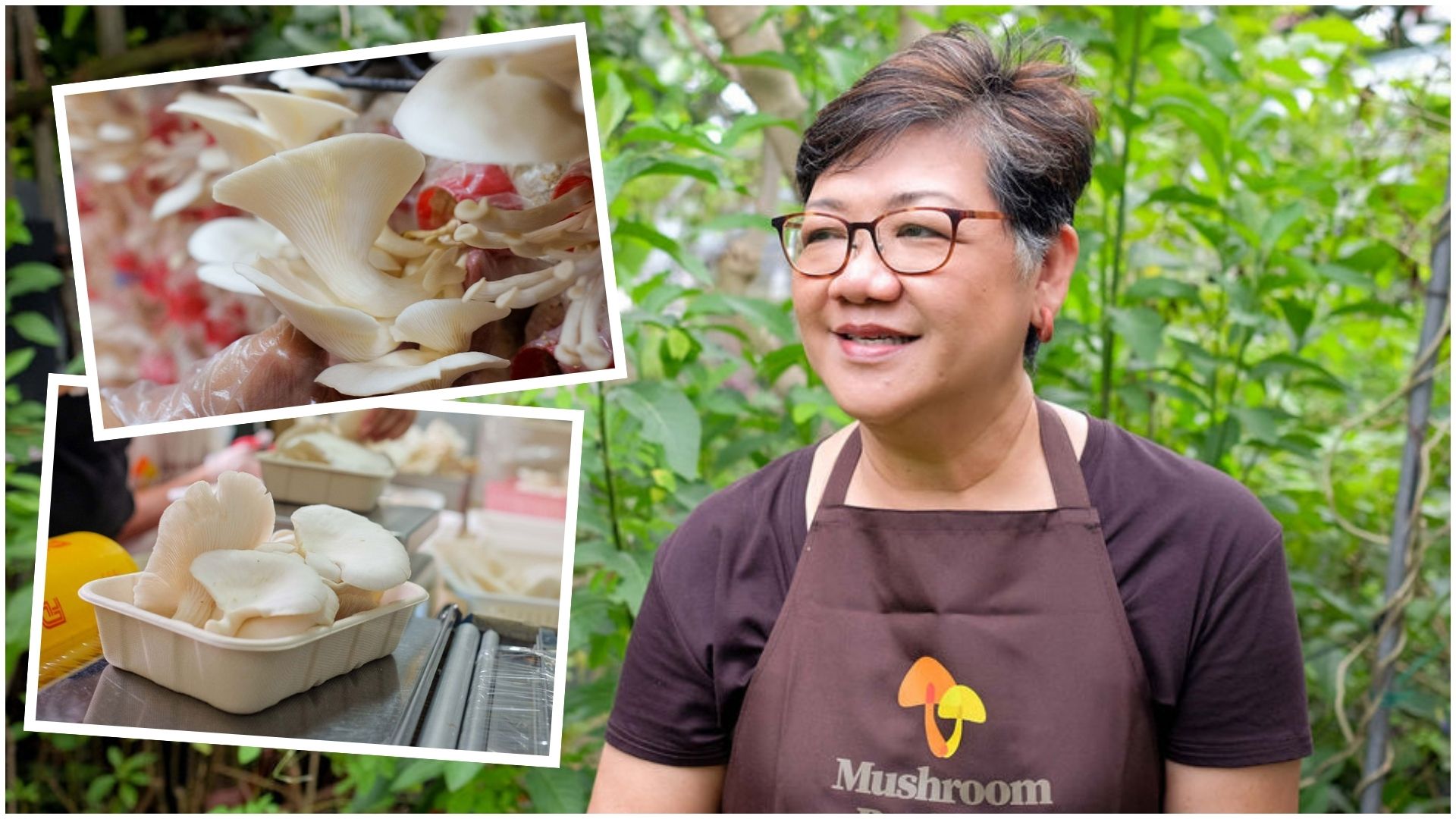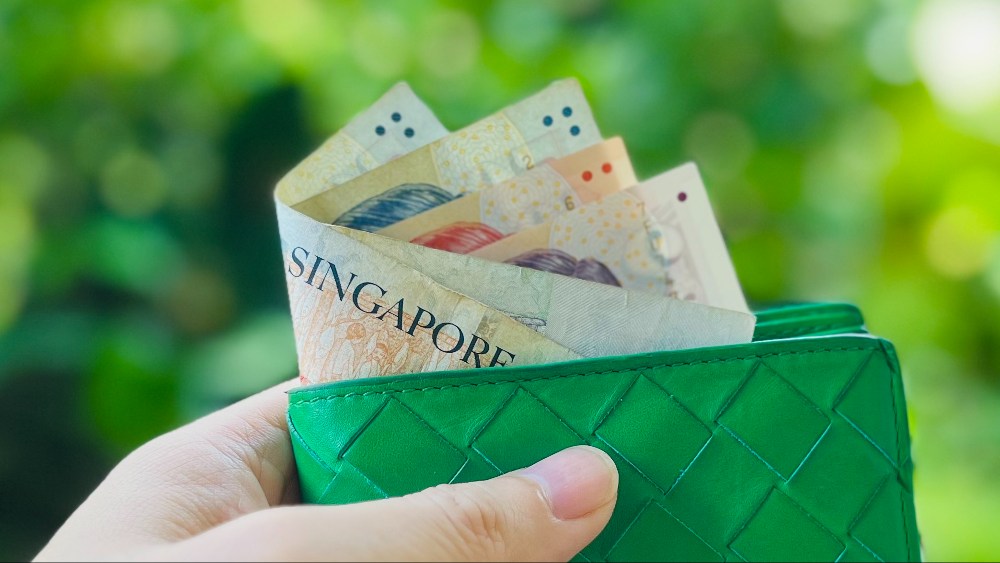From Spanish Dollars To SGD: The Rich History Of Money In Singapore
On this day (12 June) in 1967, Singapore introduced its very own dollar, marking a new chapter in our island's story. But before we got used to seeing Yusof Ishak in our wallets, Singapore had a colourful currency past, from ancient Chinese coins to Spanish dollars. Each type of money tells a tale of our transformation from a vibrant trading post to a bustling modern city.
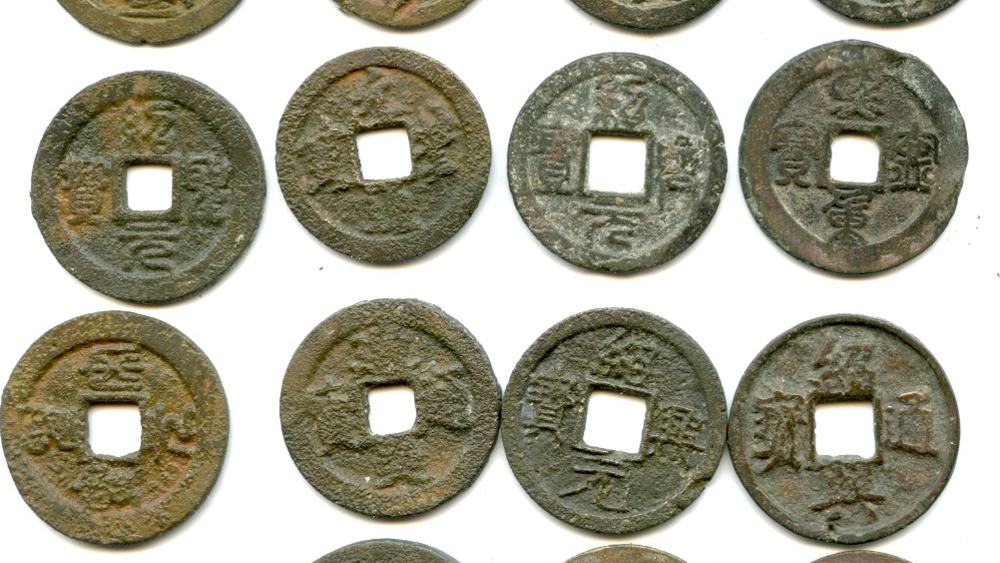 IMAGE: SCOTT SEMANS WORLD COINS (COINCOIN.COM), CC BY 3.0 <HTTPS://CREATIVECOMMONS.ORG/LICENSES/BY/3.0>, VIA WIKIMEDIA COMMONS
IMAGE: SCOTT SEMANS WORLD COINS (COINCOIN.COM), CC BY 3.0 <HTTPS://CREATIVECOMMONS.ORG/LICENSES/BY/3.0>, VIA WIKIMEDIA COMMONS
Chinese coins
Picture this: It’s the 14th century, and Singapore is a bustling port known as Temasek. Traders are everywhere, and they are using Chinese coins. Archaeologists date these coins to the Northern Song Dynasty (960–1126/1127).
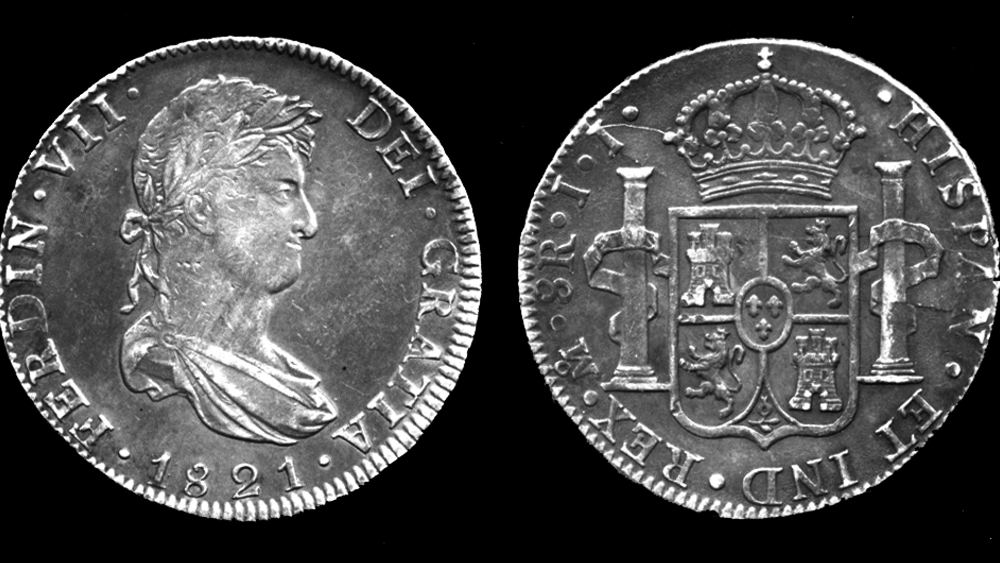 IMAGE: COINMAN62 AT ENGLISH WIKIPEDIA, PUBLIC DOMAIN, VIA WIKIMEDIA COMMONS
IMAGE: COINMAN62 AT ENGLISH WIKIPEDIA, PUBLIC DOMAIN, VIA WIKIMEDIA COMMONS
Spanish dollar
Fast forward to 1819, when the British established a trading settlement in Singapore. A mix of currencies were used at the time, such as Indian rupees, and Dutch guilders. But the Spanish silver dollar quickly became the dominant currency. To simplify transactions, John Crawfurd, the Resident of Singapore, made it the official currency in 1823.
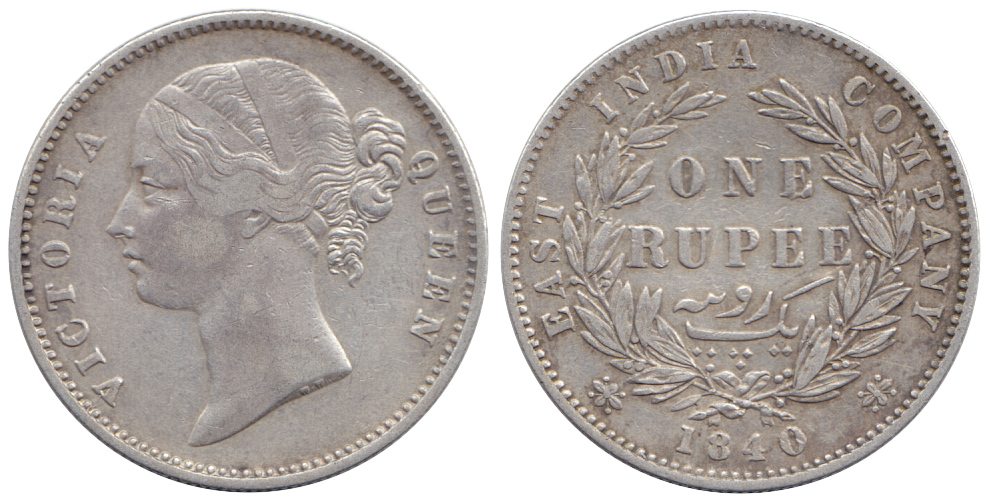 IMAGE: ПЕТРОВ ЭДУАРД, CC0, VIA WIKIMEDIA COMMONS
IMAGE: ПЕТРОВ ЭДУАРД, CC0, VIA WIKIMEDIA COMMONS
Indian rupees
In 1826, Singapore joined the Straits Settlements, and the Brits pushed for the Indian rupee as the official currency. But the Spanish dollar, now called the Mexican dollar, remained popular locally. This led to some serious currency confusion – official accounts were in rupees, but daily transactions were in dollars.
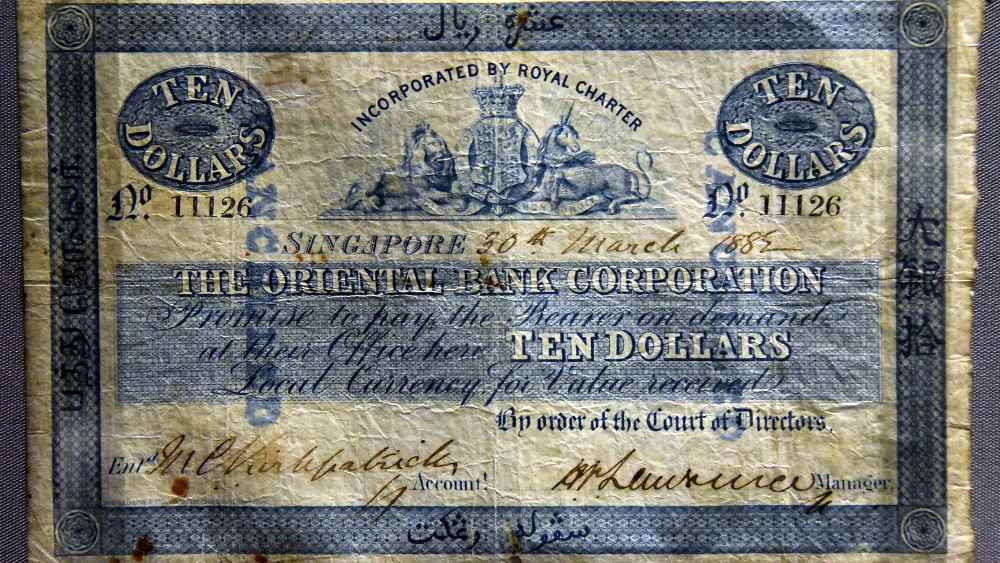 IMAGE: OSAMA SHUKIR MUHAMMED AMIN FRCP(GLASG), CC BY-SA 4.0 <HTTPS://CREATIVECOMMONS.ORG/LICENSES/BY-SA/4.0>, VIA WIKIMEDIA COMMONS
IMAGE: OSAMA SHUKIR MUHAMMED AMIN FRCP(GLASG), CC BY-SA 4.0 <HTTPS://CREATIVECOMMONS.ORG/LICENSES/BY-SA/4.0>, VIA WIKIMEDIA COMMONS
Silver dollars to bank notes
By 1867, the Straits Settlements were under London’s control. They abolished the legal tender status of the Indian rupee, and instead, Mexican, Hong Kong, Spanish, Peruvian and Bolivian silver dollars were recognised as legal tender currencies. By 1874, the Japanese yen and American trade dollar were also legal. But supply was very limited.
Commercial banks issued their own notes to supplement the limited supply of silver dollars. In 1849, the Oriental Bank issued the first bank notes in Singapore in denominations of $5, $10, $25, $50, $100 and $500. The British eventually minted their own currency notes for the Straits Settlements by 1899.
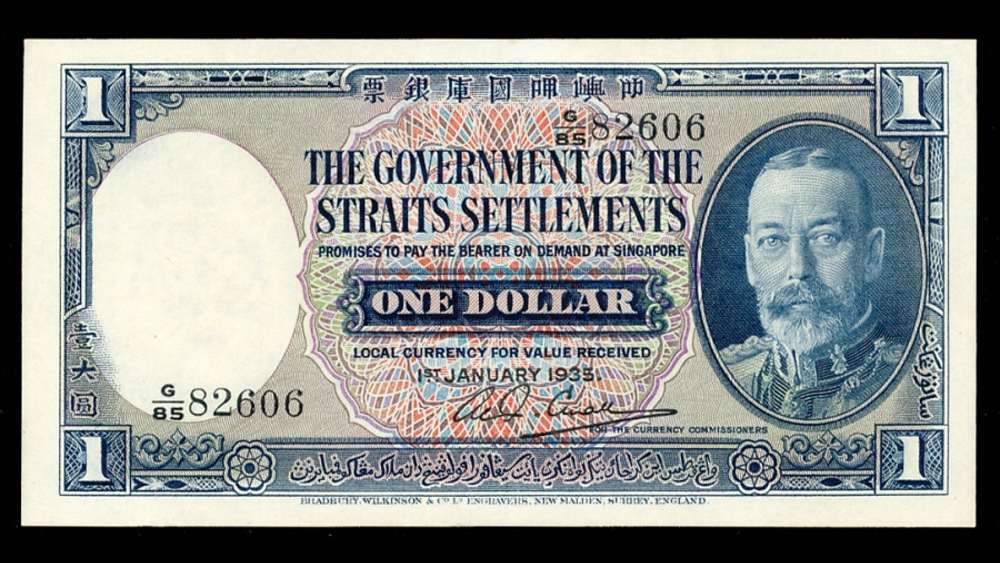 IMAGE: BRADBURY, WILKINSON & CO., PUBLIC DOMAIN, VIA WIKIMEDIA COMMONS
IMAGE: BRADBURY, WILKINSON & CO., PUBLIC DOMAIN, VIA WIKIMEDIA COMMONS
Straits dollar
In 1903, the Straits dollar made its debut, while the British, Mexican and other silver dollars were demonetised. The Straits dollar was pegged to the British sterling and stuck around until World War II.
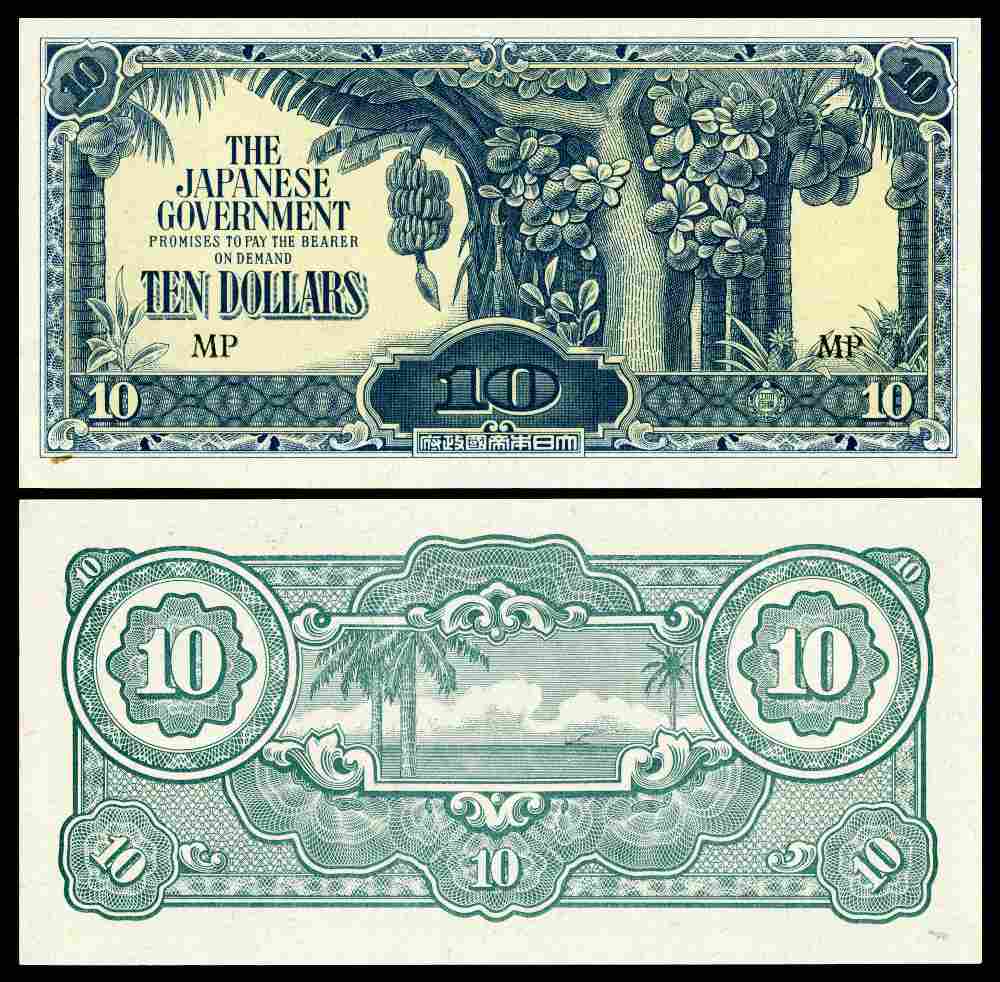 IMAGE: NATIONAL NUMISMATIC COLLECTION, NATIONAL MUSEUM OF AMERICAN HISTORY AT THE SMITHSONIAN INSTITUTION VIA WIKIMEDIA COMMONS
IMAGE: NATIONAL NUMISMATIC COLLECTION, NATIONAL MUSEUM OF AMERICAN HISTORY AT THE SMITHSONIAN INSTITUTION VIA WIKIMEDIA COMMONS
Malayan Dollar and “banana money”
In 1940, the Malayan dollar was born, uniting Malaya and the Straits Settlements’ currencies. In 1942 when the Japanese invaded, they introduced the military yen or “banana money” – named because it featured a banana plant, but became worthless because of oversupply. Post-war, the Malayan dollar made a comeback.
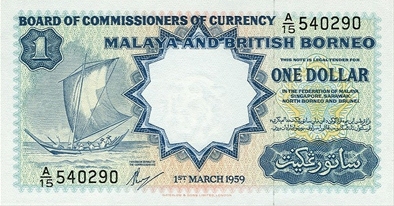 IMAGE: CHIANGKAISHEKTWNROC VIA WIKIMEDIA COMMONS
IMAGE: CHIANGKAISHEKTWNROC VIA WIKIMEDIA COMMONS
Malaya and British Borneo Dollar
After the war, the Malayan dollar became the Malaya and British Borneo dollar, used across Singapore, Malaya, North Borneo, Sarawak, and Brunei. Post-independence in 1965, Singapore planned a shared currency with Malaysia, but when that didn’t pan out, the Singapore dollar was born.
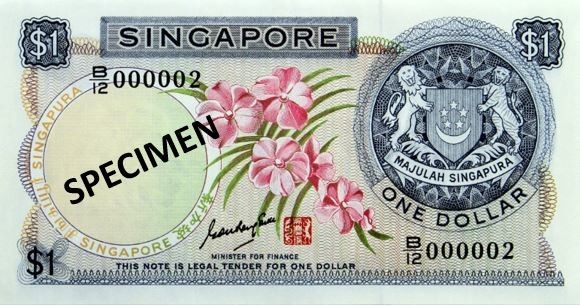 IMAGE: MONETARY AUTHORITY OF SINGAPORE
IMAGE: MONETARY AUTHORITY OF SINGAPORE
Singapore Dollar
Singapore introduced its very own dollar officially on 12 June 1967. Initially pegged to the British sterling, it switched to the US dollar after sterling’s devaluation. Now, Singapore uses a managed float system, aligning its dollar with a basket of major trading partners’ currencies. In 2002, the Monetary Authority of Singapore (MAS) took over currency issuance.
Fun fact: In 1967, Singapore, Malaysia and Brunei initially adopted a system of free interchangeability. Malaysia opted out of this agreement in 1973, but this arrangement continues with Singapore and Brunei until today. This means that you can use SGD in Brunei, and your Brunei friends can pay with the Brunei dollar here!
For other cool facts about Singapore money, read our piece "New LKY $10 Coin, Notes With National Anthem And Other Interesting Facts About Singapore Money".
For the latest updates on Wonderwall.sg, be sure to follow us on TikTok, Telegram, Instagram, and Facebook. If you have a story idea for us, email us at [email protected].
